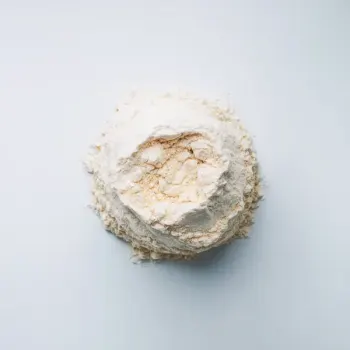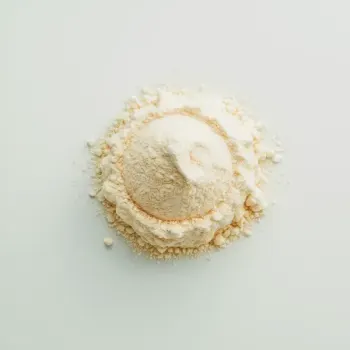Self-rising flour is a mix of all-purpose flour, baking powder, and salt, offering convenience in recipes requiring leavening. Baking powder is a leavening agent used for precise control in recipes like biscuits and layer cakes.

Self-rising flour is a combination of all-purpose flour, baking powder, and salt. It's a convenient option for recipes that require leavening, as it already contains the rising agent.

Baking powder is a leavening agent that consists of an acid (usually cream of tartar) and a base (such as baking soda). When moistened and heated, it releases carbon dioxide, causing dough or batter to rise.
Self-rising flour includes baking powder and salt, whereas baking powder is a single ingredient. Self-rising flour is used to simplify recipes, while baking powder is used for precise control over leavening.

Your ultimate Recipe Box, Meal Planner, and Cooking Class all in one
Ideal for banana bread and beer bread. It ensures even leavening and a tender crumb. Use as directed in recipes calling for self-rising flour for best results. Essential for biscuits and scones where control over leavening is important. Expect a light texture and use in recipes that call for a specific amount of baking powder.
Perfect for simple sponge cakes and cupcakes. It simplifies the process and provides a consistent rise. Be mindful of additional leavening agents in the recipe to avoid over-rising. A must for recipes requiring precise leavening adjustments, like layer cakes. It can help achieve a specific texture and volume, so measure according to the recipe's instructions.
Contributes to fluffy pancakes and waffles with minimal effort. Just add wet ingredients, and you're ready to cook. Offers control over the fluffiness and rise of your batter. Useful for creating custom pancake and waffle recipes that stand out.
The nutritional content of self-rising flour and baking powder is not directly comparable, as one is a single ingredient and the other is a blend including that ingredient.
Yes, by adding baking powder and salt to all-purpose flour, you can create a substitute for self-rising flour.
Not exactly. While self-rising flour contains all-purpose flour and baking powder, it also includes salt and is blended in specific proportions.
Self-rising flour typically results in a softer and lighter texture due to the even distribution of the leavening agent.
Yes, by adding 1 1/2 teaspoons of baking powder and 1/4 teaspoon of salt to each cup of all-purpose flour, you can make your own self-rising flour.
Yes, because it contains baking powder, self-rising flour has a shorter shelf life than all-purpose flour. Store it in a cool, dry place and use it within six months for best results.